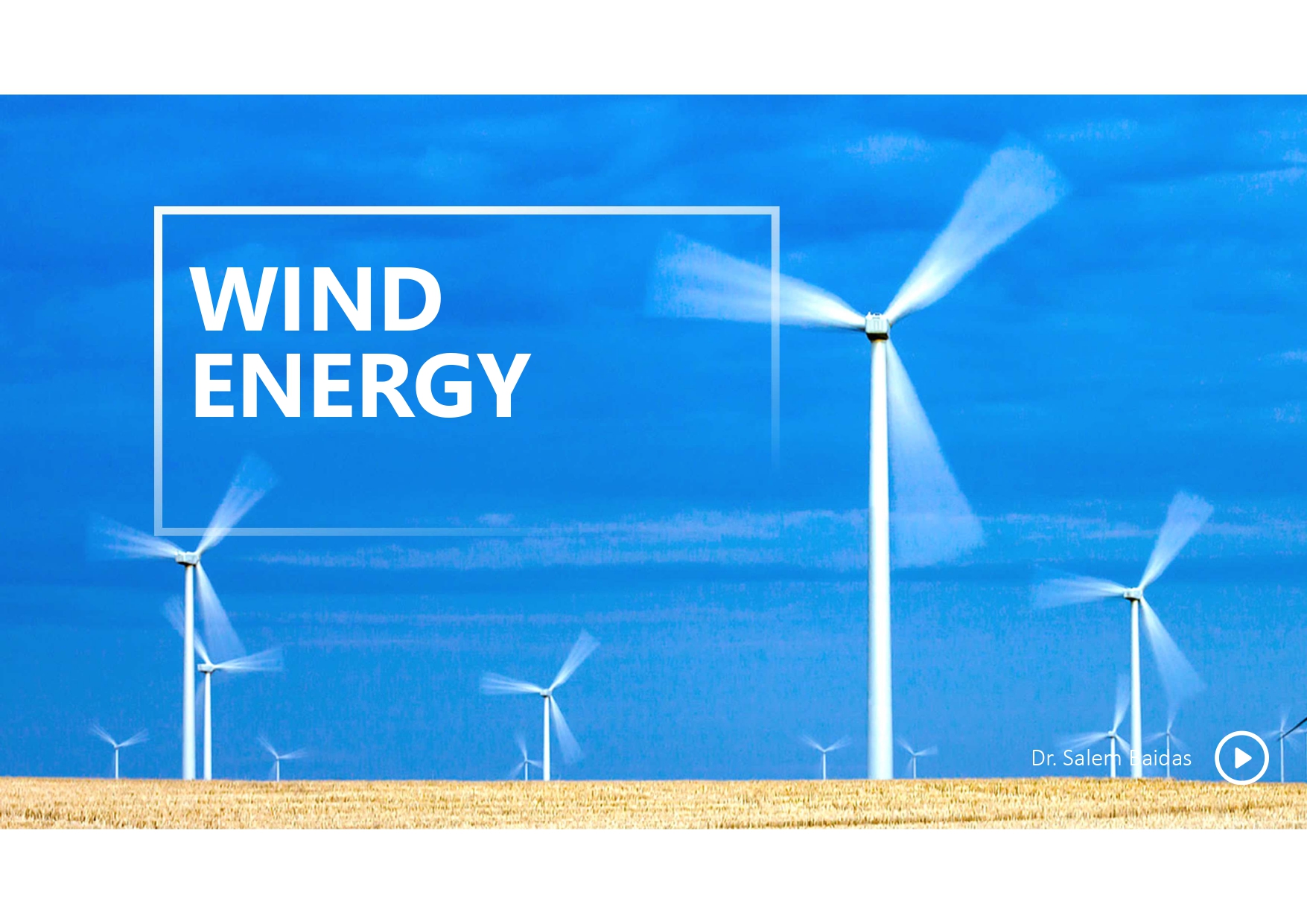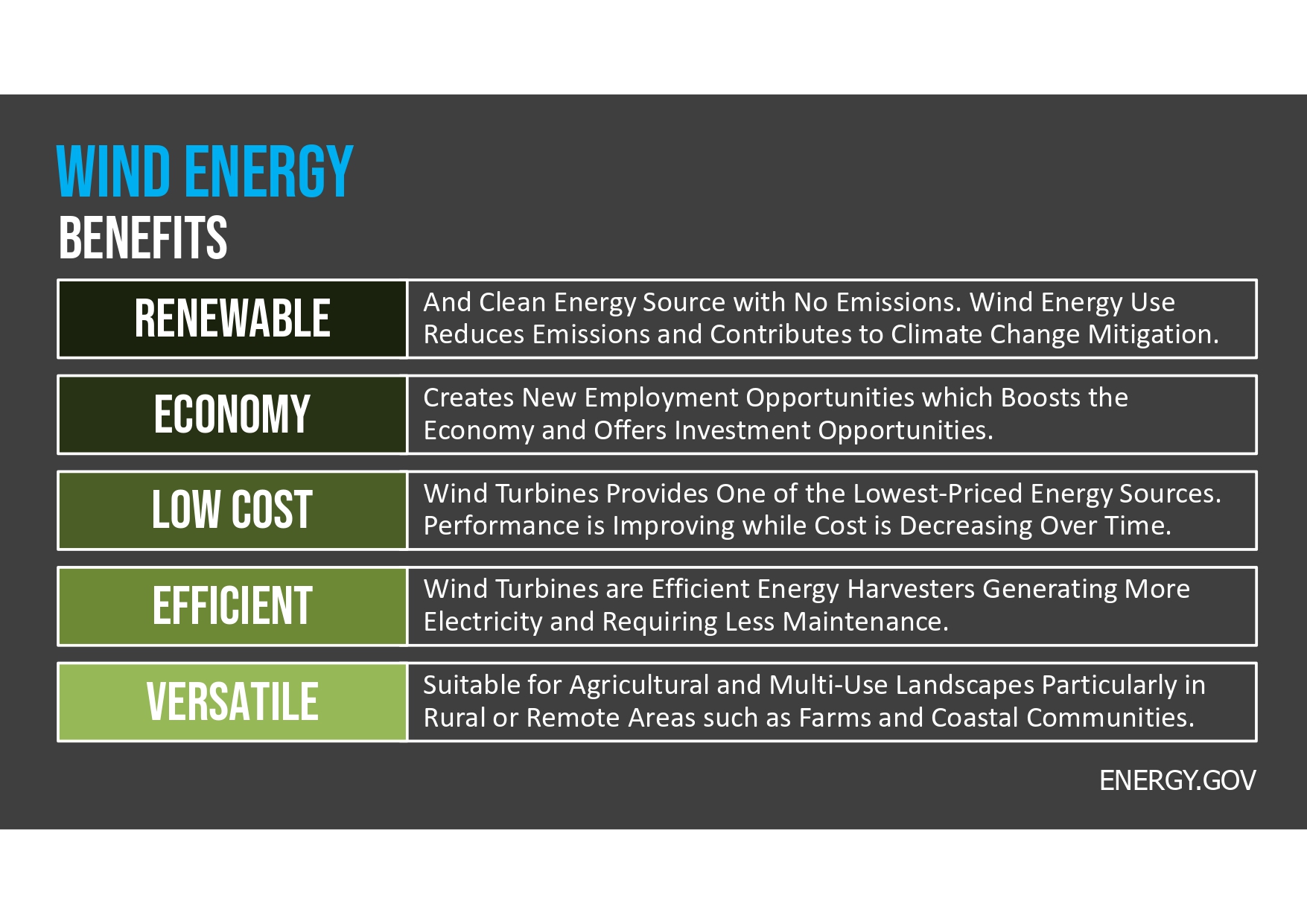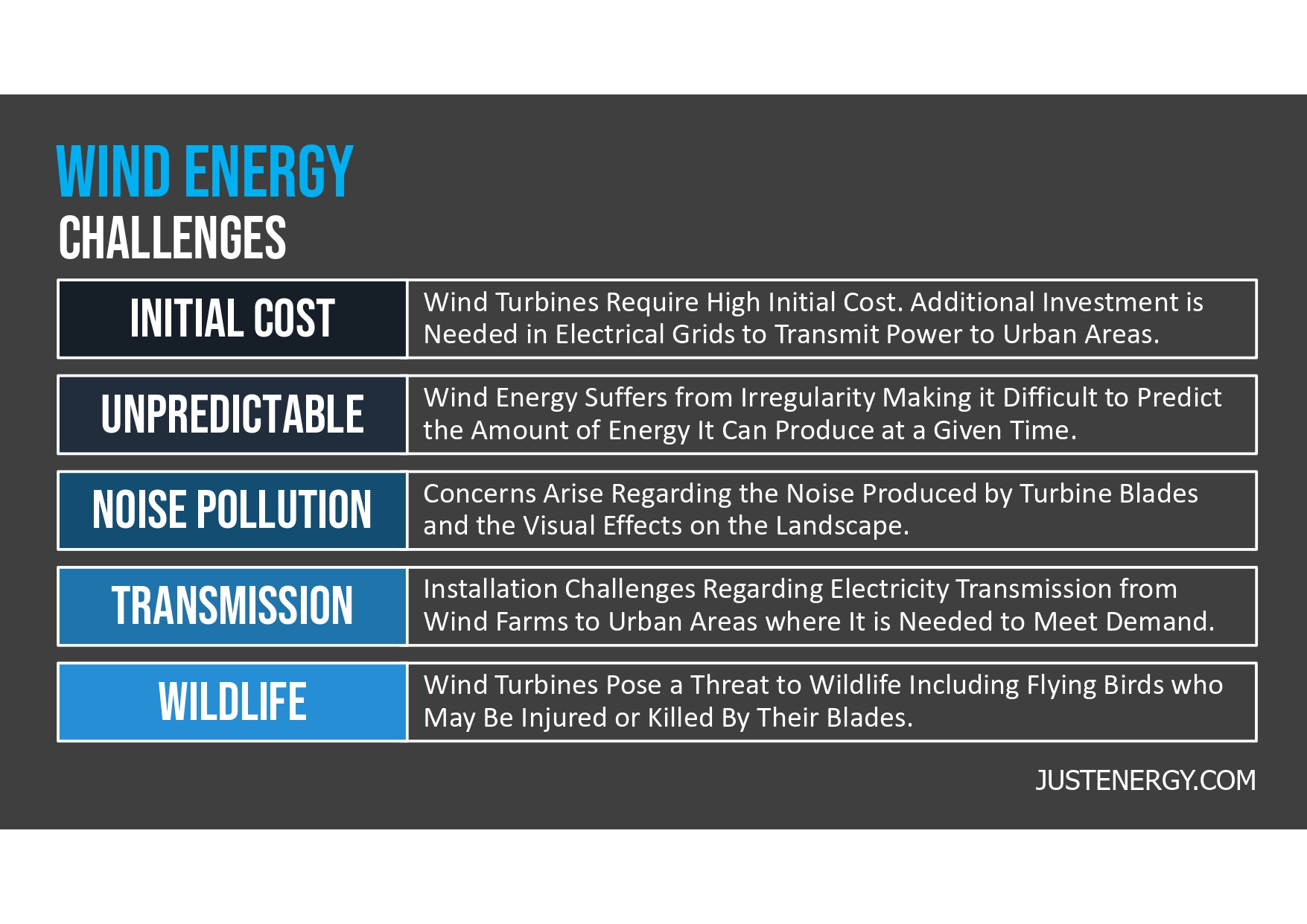Wind Energy
January 2024 – Wind Energy is characterized by its use of airflow for the production of electricity, making it a non-polluting renewable energy source. Wind turbines generate electricity by turning the blades of a turbine around a rotor which spins creating electricity. As technology continues to improve, wind turbines are becoming larger and more efficient, enabling them to generate more electricity and reduce costs. The use of clean, renewable energy sources, including wind energy, has grown due to several factors such as concerns about the environmental impacts of conventional fossil fuel sources and the associated carbon emissions, as well as the decreasing cost of wind turbine technologies. The Paris Agreement aims to reduce the global temperature rise below 2°C by 2050, requiring a clean energy transition and supporting the sustainable development goals.
In this slideshow, you will learn about the definition, types, benefits, challenges, UN policy, and global statistics of wind energy utilization. Discover how wind turbines can reduce global carbon emissions, accelerate the clean energy transition, and meet net zero emission goals by 2050.


























